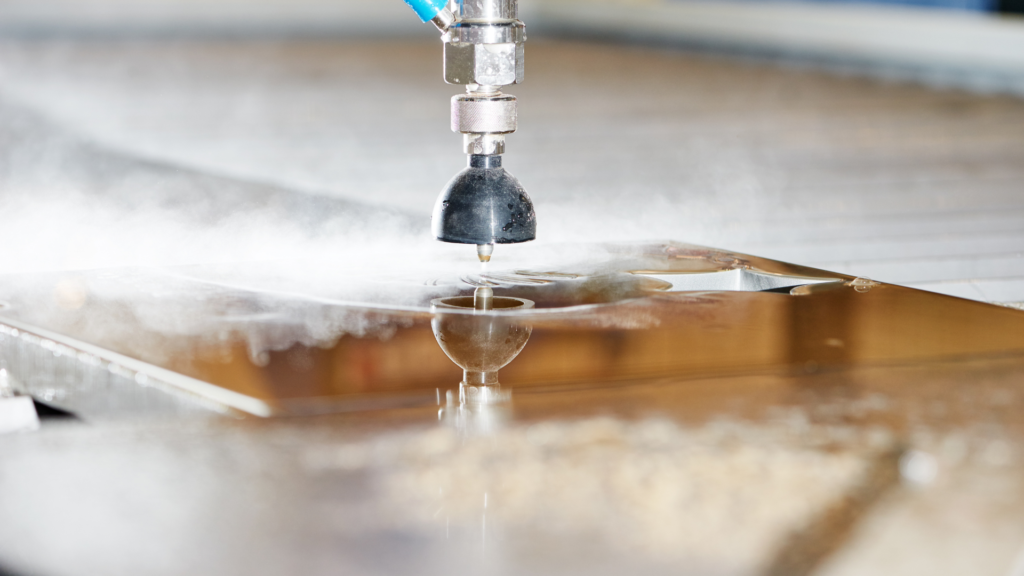By the time World War II ended in 1945, the United States had established itself as a global force on many fronts, including the metalwork industry. That surge of momentum spilled over into a new decade, as the midway point of the 20th century saw the introduction of new machinery and applications.
Below, we’ll dive into what you need to know about 1950s metalwork. This is a continuation of our ongoing series, which started with Metalwork in the 1920s and continued with Metalwork in the 1930s and Metalwork in the 1940s.
1950s trends and developments
The days of manually controlling machines came to an end in the 1950s. Numerical control, later called computer numerical control (CNC) when computers entered the fold, served as the beginning stages of a revolutionary movement.
General Electric created numerical controls that used magnetic tape to record the motions operators made. The company repeated this process to duplicate parts. Today, we use this process at Coco Architectural during our laser cutting process. Once we design an AutoCAD file, there’s an offline software that programs the CAD file to create the G-Code and run the machine.
Gas metal arc welding debuted in this decade as a way to weld on traditionally non-ferrous materials. Manufacturers also introduced the short-circuiting application method that allowed you to use thinner materials for welds.
Many of the steel factories that blossomed in the 1940s during World War II looked for a way to serve customers inside the homes. Steel kitchen cabinets, which were already common in the 1940s, become more mainstream. They came in all shapes and sizes, even pastel colors.
The supply made them more affordable, and Americans had more money to spend after the war. These cabinets would eventually fade in the 1960s when cheaper, more durable materials became available — steel lasted long, but it was prone to denting and rusting.
Aluminum, meanwhile, helped support new designs for washers and dryers, and Coors Brewing Company introduced the aluminum can in 1959 as a way to improve packaging and encourage recycling.
Korean War impact
The American steel boom that skyrocketed in the 1940s continued during this decade. Steel manufactured in our homeland accounted for 40% of the world's steel.
Similar to how the 1940s created a need for increased metalwork to support the World War II cause, the same held true in the 1950s for the Korean War. The focus shifted from consumer goods production to various military weaponry and equipment.
As this happened, steel unions quickly recognized their importance and pushed for wage increases. When negotiations stalled, the unions threatened to strike and ultimately walked out for 53 days until coming to a resolution.
Some countries used tungsten to make projectile missiles during WWII, but tungsten became scarce since Korea was a major supplier. As an alternative, manufactures developed a new composition material of titanium carbide, molybdenum caribe and nickel.
Metalwork in architectural design
Various metals, such as aluminum and steel, continued to dominate architectural design during this decade. One of the more notable structures erected had military ties. The U.S. Air Force Academy was built using 2,500 tons of aluminum during the construction process. The most recognizable piece of architecture from the project was a group of 17 successive aluminum spires with 100 tetrahedrons in each structure.
By the 1950s, the use of anodized aluminum spiked due to its corrosion-resistant properties and ability to add color to the otherwise dull aluminum. Around the same time, contractors used aluminum siding with a baked-on finish in commercial architecture such as the Alcoa Building in Pittsburgh, Pennsylvania. A curtain wall constructed with aluminum sheets helped save costs. The exterior received an anodized coating for protection.
While steel continued with its strong hold on the metal industry, copper-bearing steels grew in popularity thanks to corrosive-resistant properties from a protective oxide coating. Architects and builders used this metal in culverts and railroad grain cars.
In other metalwork uses, renowned architect Buckminster Fuller made geodesic domes popular in the 1940s with his use of aluminum to hold glass panels together. In the 1950s, he constructed the first geodesic dome with aluminum and plastic.
Many of these trends and metal uses still exist today, so contact us if you’re feeling inspired to start a custom metal grille project of your own. We offer linear bar grilles, perforated metal grilles or custom metal products, and we’re eager to help you find the perfect solution for your project. Download our product catalog or request a quote for more information.


